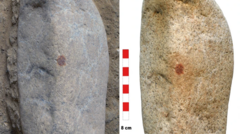Research indicates that bedbugs shifted from bats to human hosts approximately 245,000 years ago and have thrived in urban environments for 13,000 years, illustrating their reliance on human habitats.**
The Enduring Bond: Bedbugs and Humans in Urban Life**

The Enduring Bond: Bedbugs and Humans in Urban Life**
A new study reveals the ancient relationship between bedbugs and humans, highlighting their evolution alongside urbanization over thousands of years.**
Throughout history, few relationships have proven as enduring and complex as that between bedbugs and humans. While the adoration may not be mutual, the bloodsucking pests have forged a significant bond with civilization for over 245,000 years. According to recent research published in the journal Biology Letters, these common parasites originated from cave-dwelling bats but made a pivotal shift to human hosts, often linked to early hominins like Neanderthals.
This fascinating study, led by Warren Booth, a professor of urban entomology at Virginia Tech, details how bedbugs transitioned from a diet of bat blood to that of early humans, highlighting their evolution into two separate species. One, which continues feeding on bats, and the other, now synonymous with human presence, has built a unique existence alongside us.
Booth emphasized that bedbugs are not found wandering in gardens or forests; their survival and proliferation hinge entirely on human habitats. The research notes a significant resurgence of bedbug populations roughly 13,000 years ago, aligning with the rise of urban settlements when early human communities began to establish more permanent residences.
Despite the slight discomfort they cause and their reputation as parasites rather than vectors for disease, bedbugs have found success in human environments unmatched by other pests. While they may harbor a reputation for being unwelcome roommates, their ability to adapt to human living spaces speaks to their resilience and evolutionary success in our urbanized world.
This long-standing bond exemplifies the intricate and often unseen connections in the natural world, raising intriguing questions about the future of our coexistence with these tenacious bugs.
This fascinating study, led by Warren Booth, a professor of urban entomology at Virginia Tech, details how bedbugs transitioned from a diet of bat blood to that of early humans, highlighting their evolution into two separate species. One, which continues feeding on bats, and the other, now synonymous with human presence, has built a unique existence alongside us.
Booth emphasized that bedbugs are not found wandering in gardens or forests; their survival and proliferation hinge entirely on human habitats. The research notes a significant resurgence of bedbug populations roughly 13,000 years ago, aligning with the rise of urban settlements when early human communities began to establish more permanent residences.
Despite the slight discomfort they cause and their reputation as parasites rather than vectors for disease, bedbugs have found success in human environments unmatched by other pests. While they may harbor a reputation for being unwelcome roommates, their ability to adapt to human living spaces speaks to their resilience and evolutionary success in our urbanized world.
This long-standing bond exemplifies the intricate and often unseen connections in the natural world, raising intriguing questions about the future of our coexistence with these tenacious bugs.






















